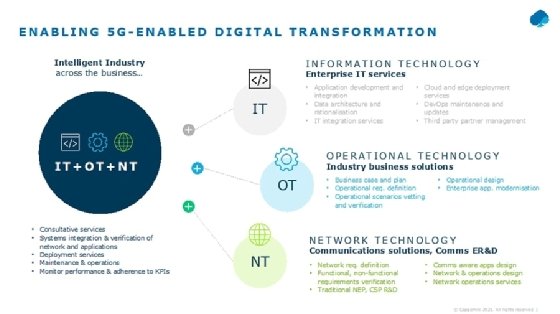
kras99 - stock.adobe.com
Developing private 5G network strategy for Industry 4.0
If manufacturers can set up the right network option from the start, they will ensure support for future Industry 4.0 investments, such as autonomous robots.
Thanks to the Industry 4.0 trend, proprietary information increasingly flows in and out of autonomous robots. This includes CAD files, production statistics and other key data that directly affects an organization's competitiveness, bottom line and customer satisfaction.
A secure, reliable, high-performance wireless network is critical for keeping that data and production flowing while also protecting it against hackers and industrial espionage. Manufacturers with IoT networks can consider investing in 4G LTE and 5G as part of their strategy for secure private networks that meet their performance needs.
In 2019, manufacturers and other businesses spent $945 million on private 4G LTE and 5G network infrastructure, IDC estimates. By 2025, they'll spend $5.7 billion, a compound annual growth rate of 43.4%. As the newer technology, 5G offers some capabilities that 4G doesn't have, including:
- Ultra-reliable low-latency communications. This feature provides latencies as low as 1 ms, which is ideal for delay-sensitive, mission-critical use cases such as time-sensitive networking.
- Massive machine-type communications. This feature enables 5G networks to support up to 1 million IoT devices per square kilometer, such as autonomous material handlers, industrial robots and sensors that detect if a conveyor motor is starting to overheat.
- Enhanced Mobile Broadband. This capability supports bandwidth-intensive applications such as HD and 4K video surveillance cameras in and around a plant. AI also could use that video to monitor and analyze factory floor operations for problems and opportunities, such as tweaking workflows to eliminate bottlenecks.
4G will be here for years to come and 5G similarly offers longevity for use with network infrastructure and IoT devices that will be widely available for at least the next 20 years.
Despite being new, 5G is already descending the cost curve. Private 5G operators benefit from public network deployments, whose mass-market scale is steadily driving down infrastructure costs. At the end of 2020, 163 public 5G networks were in commercial service worldwide, with the total expected to hit 277 by the end of 2021, according to TeleGeography.

Strategic control
Organizations choose different technologies for their private networks, but all share the strategy to gain more control. For example, some utility companies have chosen to build private 2.5G, 3G, 4G and WiMax networks to gain more control over network access. By owning a private network, manufacturers control coverage and can fine-tune performance to meet their unique requirements.
Some companies have chosen 5G for autonomous use cases, such as robotics for discrete manufacturing and more granular control over manufacturing. Autonomous mobile robots improve efficiency, reliability and accuracy of transportation and haulage of automotive parts and materials. They can reduce labor costs, eliminate human error and increase workplace safety. With more flexibility than automatic guided vehicles, which follow planned routes, these robots can be programmed to reroute and avoid obstacles.
Warning signs
Few manufacturers have experience designing and installing a mobile network. There is also no turnkey, plug-and-play private 5G network solutions for robotics. Even if there were, they'd still have to be extensively customized to ensure that everything functions smoothly. For example, manufacturers must check that signals aren't attenuated by physical obstructions such as steel storage racks and interference sources such as electric motors.
Organizations must collaborate with all the vendors supplying software systems, appliances, autonomous robots and other components of an Industry 4.0 ecosystem to achieve seamless coverage throughout manufacturing plants. Interoperability is key.
Organizations must develop operational technology (OT) and IT expertise to avoid the many ways that a network deployment can go wrong. For example, the CIO might be overly focused on the technology selection instead of considering how those choices affect use cases and business requirements.
Mobile operators increasingly offer network as a service (NaaS) to grab their share of the burgeoning private network market. One drawback is that NaaS offerings often are simply extensions of the public network rather than infrastructure specifically designed and deployed to meet each client's unique business requirements. Even if a manufacturer decides to go the NaaS route, it still will need OT, networking technology and IT integration, which are specialties outside the domain of mobile operators. These are all potential challenges to be mindful of when developing a strategy for private networks.
Getting your strategy right
Many major manufacturing plants are built in places where land is inexpensive. Those remote locations often are the last places where mobile operators deploy the latest network technology. In locations such as these, manufacturers can deploy 4G LTE for private networks. Alternatively, they can also deploy and use their own 5G technology for private networks.
With the right planning, resources and mindfulness of the potential pitfalls, manufacturers can get their private network strategy right to take advantage of robotics. The bottom line: Getting everything right from the start can be easier said than done but ensures that the private 5G network can support an Industry 4.0 transformation for years to come.
About the authors
Ben Pietrabella is a global technology leader with more than 30 years of experience in driving success in complex enterprise applications and telecommunications products. Prior to his current role as VP for Capgemini Engineering's network equipment providers business unit, Pietrabella led Altran's Advanced Network Technology and IoT Global Service Line. He has significant knowledge and experience in enterprise architecture, product management, product development and integration services for multi-vertical enterprise application products, as well as carrier-grade telecommunications software products. At Comverse, he drove the company's product portfolio architecture, technology selection and roadmaps. Pietrabella has also held leadership roles as vice president of deployment architecture at Pitney Bowes, where he drove architectural design and led operations for its on-demand SaaS-based solutions. He holds a master's degree in computer engineering and has completed The Wharton School's Advanced Management Program at the University of Pennsylvania.
Manas Tiwari currently serves as the client leader for Capgemini Engineering's network equipment providers business unit. Over the years he has held various leadership roles within the organization since the inception of Hughes Software Systems. He has worked with communications service providers to virtualize their network and deliver applications that drive growth, reduce Capex and Opex, and provide a paradigm shift for introducing new solutions to market. He is a global technology leader with more than 20 years of experience in driving success in complex enterprise applications and telecommunications products. He has significant knowledge and experience in enterprise architecture, product management, product development and integration services for multi-vertical enterprise application products, as well as carrier-grade telecommunications software products. He holds a master's degree for business administration in international business from ESCP Business School.





